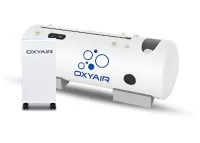Can a pregnant woman go into a hyperbaric chamber
Can a pregnant woman go into a hyperbaric chamber?
Hyperbaric oxygen chamber (HBOT) is a medical method that uses high-concentration oxygen for treatment in a high-pressure environment. It is widely used in the fields of trauma repair and chronic disease management. However, whether pregnant women can enter the hyperbaric oxygen chamber for treatment has always been a topic of concern.
This article will explore the potential effects of the hyperbaric oxygen chamber on pregnant women and fetuses, and analyze its safety and applicability.
Pregnant women can use hyperbaric oxygen chamber treatment under certain conditions, but they must be cautious and under the guidance of professional doctors. The following are some key points about the use of hyperbaric oxygen chamber treatment for pregnant women:
Indications
Intrauterine growth retardation (IUGR):
Hyperbaric oxygen therapy can improve intrauterine growth retardation. Studies have shown that hyperbaric oxygen therapy can increase the mother's blood oxygen concentration and improve uterine blood flow, thereby promoting the normal growth and development of the fetus.
A study showed that pregnant women in the hyperbaric oxygen therapy group were better than those in the control group in terms of uterine height, abdominal circumference, weight, and fetal biparietal diameter, and the weight of newborns was also higher.
Threatened abortion:
Hyperbaric oxygen therapy can be used for pregnant women with threatened abortion to reduce the risk of abortion by improving the mother's blood oxygen supply.
Studies have shown that hyperbaric oxygen therapy can significantly increase the success rate of pregnancy preservation in pregnant women with threatened abortion, and no obvious adverse reactions have been found.
Fetal distress:
Hyperbaric oxygen therapy can be used for pregnant women with fetal distress to reduce the risk of fetal hypoxia by improving the fetal oxygen supply.
In a study, 73 pregnant women received hyperbaric oxygen therapy, including 17 pregnant women with fetal distress. All pregnant women gave birth at full term and no complications were found.
Hyperbaric Oxygen Chamber Treatment methods
Normal pressure saturated oxygen therapy:
For pregnant women with physiological hypoxia, normal pressure-saturated oxygen therapy is a safer choice. Pregnant women wear masks to breathe pure oxygen without pressurization in the oxygen chamber, 0.5 hours each time, twice a day, and one course of treatment per month (7-10 days).
For pregnant women with pathological hypoxia, different treatment plans can be carried out at 4-12 weeks and 34-40 weeks of pregnancy, including 0.5 hours of oxygen inhalation per day for 7-10 consecutive days, and then rest for 7-10 days before the next course of treatment.
Hyperbaric oxygen therapy:
For certain specific pathological hypoxia conditions, hyperbaric oxygen therapy may be more effective. The treatment pressure is usually controlled at 0.2 MPa (2.0 ATA), and each treatment time is about 1.5 hours, including the process of boosting pressure, oxygen inhalation, rest and decompression.
During the treatment, pregnant women can listen to light music to achieve the purpose of fetal education. At the same time, the temperature and ventilation conditions in the cabin are good to ensure the comfort of pregnant women.
Hyperbaric Chamber Safety
Potential risks:
Hyperbaric oxygen therapy may cause some adverse reactions, such as tinnitus, dizziness, nausea, etc. However, these reactions are usually short-lived and will not cause long-term effects on pregnant women and fetuses.
It has been reported that long-term hyperbaric oxygen therapy may lead to fetal posterior lens fibrosis, but this risk can be avoided under appropriate treatment pressure and time control.
Safety measures:
A comprehensive examination is required before treatment to ensure that pregnant women have no contraindications to hyperbaric oxygen therapy. Such as a history of hypertension, cardiovascular disease, liver and kidney dysfunction, etc.
During the treatment, it is necessary to closely monitor the physiological indicators of pregnant women such as blood pressure and heart rate. Once discomfort occurs, the treatment should be stopped immediately and symptomatic treatment should be carried out.
The treatment time should not be too long, is generally controlled within 1-2 courses of treatment, each course of treatment is 10 days, and the interval between courses is 5 days.
Hyperbaric Chamber Clinical effect
Fetal development:
Hyperbaric oxygen therapy can significantly improve the development of the fetus, increase the birth weight of the fetus, and reduce the risk of fetal intrauterine distress and neonatal asphyxia.
In one study, 116 pregnant women received normobaric saturated oxygen therapy, and follow-up results showed that all babies born to pregnant women were healthy.
Maternal health:
Hyperbaric oxygen therapy can improve blood flow in pregnant women and reduce the risk of threatened abortion and other pregnancy complications.
Studies have shown that hyperbaric oxygen therapy can increase blood oxygen concentration in pregnant women and improve uterine blood flow, thereby improving the overall health of the mother.
Conclusion
Pregnant women can use hyperbaric oxygen chamber treatment under certain circumstances, especially in pathological hypoxia such as intrauterine growth retardation, threatened abortion, and intrauterine fetal distress. However, the treatment must be carried out under the guidance of a professional doctor, and the treatment pressure and time must be strictly controlled to ensure safety and effectiveness.
As a safer option, normobaric saturated oxygen therapy can also be considered for pregnant women with physiological hypoxia. In general, the application of hyperbaric oxygen therapy in pregnant women has certain potential, but it still needs to be treated with caution.
Pregnant women should use HBOT under the guidance of a professional doctor and adopt the safest treatment plan.














